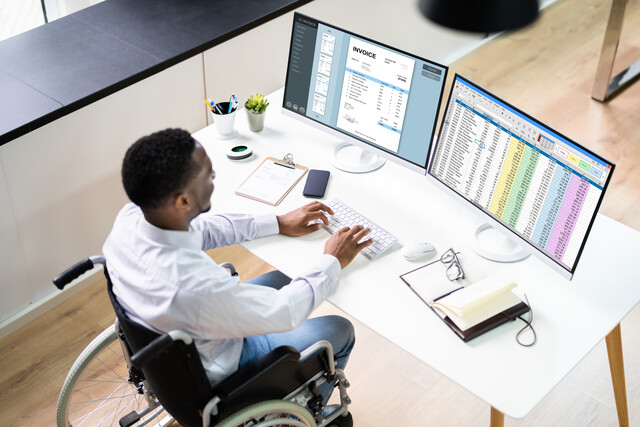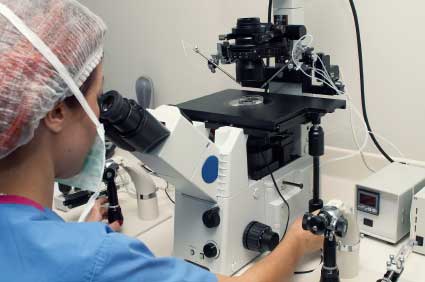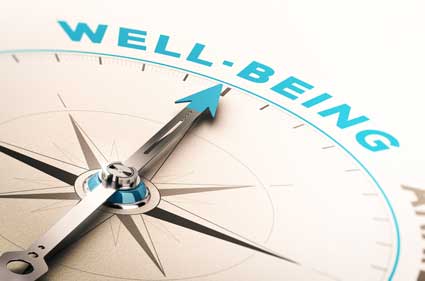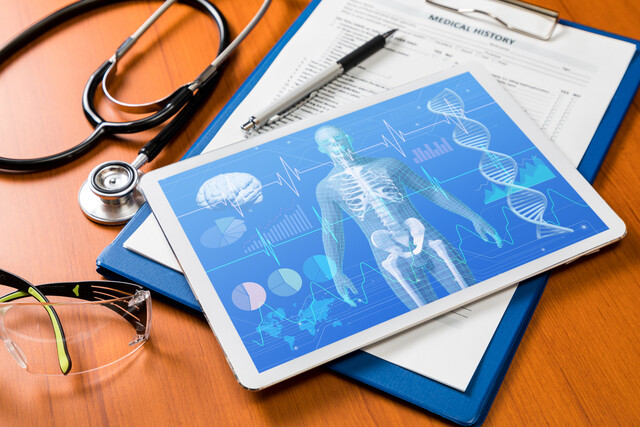Patients frequently fall, causing injury to themselves and to those who are taking care of them. In fact, falling is one of the most common causes of injury in nursing home patients. These falls occur for a variety of reasons, ranging from dizziness or sudden pain to inefficient transfer skills by the nursing staff. If you are in charge of transferring a patient from one location to another, be sure you are doing it correctly and following all safety precautions in order to minimize injury to yourself or the patient.
The most common causes of falls in health care facilities are:
- Weakness or gait problems (such as a limp)
- Hazardous conditions such as an improperly adjusted bed, wet flooring or an unlocked wheelchair
- Sedatives and other medications that may make patients dizzy or disoriented
- Problems during transfer, whether from bed to chair, from chair to bathroom, etc.
A nursing assistant can ensure that at least two of these conditions are minimized -- she can make sure that conditions are not hazardous in patient rooms and she can learn and use proper transfer skills. Always scan a patient's room when entering to check for potential hazards such as spilled water, clothing or bedding that has fallen on the floor or other dangers. Correct these immediately.
Transfer Skills
Proper transfer skills need to be learned so that you can confidently move your patient when needed. There are several things to keep in mind when transferring a patient, including:
- Always lift with your legs rather than your back
- Remember that pushing is easier than pulling
- Get help whenever necessary; it is always better to ask for the assistance of another nursing assistant than to risk injuring yourself or your patient
- Be sure your patient understands what you are doing and suggest a way they can help.
- Hold the patient close to your own body for support and stability.
- Use a gait belt when it is warranted to provide balance to the patient and prevent you from injuring your back.
Transferring from Bed to Chair
Most nursing assistants will transfer several patients from their bed to a chair or wheelchair every morning. It is one of the most common procedures you will perform. While you will learn other forms of transfer, this is one that will be essential. The required steps are as follows:
-
- Roll the patient onto his or her side and lower the feet to the floor. Raise the head of the bed slowly to help the patient attain a seated position.
- Place the chair or wheelchair at the side of the bed, facing the foot. If it is a wheelchair, move the arm- and foot-rests out of the way. Be sure to lock the brakes -- this is absolutely crucial for safety.
- Position yourself with one foot between the patient's feet and one foot in the direction you will be moving. Place you hands on both sides of the patient's back.
- Be sure to tell the patient when you will begin the move so that he is prepared. Lift the patient gently, asking him or her to use their hands to push off the side of the bed and support themselves as much as possible.
- Lower the person onto the chair, asking him to ease back with his buttocks as far as he can. Gently assist him to sit upright as needed. .
- Return the arm- and foot-rests to the correct position and make sure the patient is comfortable before unlocking the wheelchair.
- Be aware of any medical conditions that may make transfer more difficult. A patient who has recently had a hip replacement will not be able to roll onto that side and will not have much mobility or rotation in the area. The risk of injury during transfer will be higher and extra precautions will need to be taken.
- Remember -- your patient may be nervous or unsteady. He or she is giving over control of his or her body to your care for those moments, and apprehension is normal. Be reassuring and assertive, not timid.
Ambulating
Ambulating is simply assisting a patient who is walking on his or her own. Many patients may be weak or unsteady on their feet, requiring that you watch carefully to make sure that they don't fall. Stand on the patient's weak side, or, if the patient is able to walk on their own, you can stand slightly behind them. Be prepared to move quickly in the event the patient stumbles or becomes become unsteady. When this occurs, assist them to a seat and have them remain seated until you are sure they are able to continue.
When ambulating a patient with a catheter, extra precautions must be taken. The catheter line can never touch the ground because in addition to increasing the risk of infection, it is a violation of heath standards. You should always keep the catheter bag below the level of the patient's bladder. Do not attach the catheter bag to yourself as sudden or unexpected movements can cause the catheter to dislodge. Also watch for kinking of the catheter line, which can cause backups requiring medical attention.
Using a Gait Belt
Most facilities advocate the use of a gait belt when transferring or ambulating patients. The gait belt is a simple device used to support the patient during movement. It not only allows the nursing assistant to provide more support, it can reduce the risk of injury to both the patient and the NA.
The gait belt is a wide belt of leather, nylon or canvas that buckles around the waist. It has areas on the sides where the nursing assistant can get a good grip to move or help support the patient.
The gait belt should be put on over the patient's clothing and fastened in front. Be sure it is snug, but with enough room to get your fingers under the edge. Once transfer is complete or the patient arrives at his or her destination, be sure to remove the belt.
Bed-Making Procedures
- Gently roll the patient onto her side on one side of the bed. Place a pillow behind her back for support and, if it will make her more comfortable, one between her knees.
- On the empty side of the bed, pull off the soiled linens and fold them tightly toward the patient.
- Place the clean sheets on the bed and tuck the bottom sheet into place, then the top sheet.
- Smooth out the sheets until they are up against the folded edge of the sheets being removed.
- Gently roll or lift your patient over the sheets -- never drag the patient -- and roll onto her opposite side on the clean sheets. Again, place a pillow behind her back for support.
- Go to the other side of the bed, and carefully pull the soiled linens off of the bed. Immediately dispose of the soiled sheets in a hamper or place in an appropriate location until they can be taken to the laundry -- never put them on the floor!
- Pull the bottom sheet over the side of the bed, tuck in the top sheet and be sure to smooth out any wrinkles. Keep in mind that when you are in bed for long periods of time, even small wrinkles can become very irritating.
- Roll your patient back into a comfortable position while you change the linens on her pillows one at a time.
Admission/Discharge/Transfer procedures
The admissions, discharge and transfer procedures used will depend upon both the type of facility you are working in and the particular rules and regulations within that facility. The only way to fully understand these procedures is to learn them from the staff, which will usually include shadowing an employee who handles these procedures as well as reading the employee handbook and guidelines for your facility. There are some aspects of these procedures that are always a part of the nursing assistant's role. These include interaction with the patient's family and taking care of the patient's personal belongings.
When a patient is being checked into a facility, you should be sure to keep the lines of communication with the patient and the family open. While the admitting staff is preparing paperwork and making the necessary arrangements, the family may have a lot of questions about daily routine, visiting hours and other details that aren't necessarily a part of the admissions process. Talk to the family members and the patient about these issues. If there is a question that you can't answer, take notes and be sure to relay any questions to the appropriate individuals as soon as you can.
Be sure to explain how personal belongings will be stored and how they can be retrieved. Acclimate the new patient to his or her room by showing him where the call button, remote control for the television and any other important devices can be found. Do the same for the family, and provide copies of any instructions or manuals that can be helpful during this transition period.
Discharge or transfer should be handled in much the same way. Respect for the concerns and questions of the patient and his or her family should be your first priority. Your second priority is to make sure that none of the patient's personal belongings are left behind or lost. Double-check everything and ask your patient if he or she can think of anything that might be missing. Making the transition as smooth as possible will reduce anxiety and aid in the adjustment for the patient.
Quick recovery after illness or surgery depends on a number of things, including proper nutrition. In the elderly or chronically ill, proper nutrition is even more important; typically the elderly do not have a very good appetite and it is often further diminished in the days and weeks following surgery. Health care facilities spend a great deal of time, research and money to develop well-balanced, nutritious meals for patients. As a nursing assistant, one of your responsibilities is to be sure that the patients in your care are taking advantage of these meals and getting the proper amount of daily nutrients.
Many health care facilities make all meals low sodium in order to accommodate the needs of patients who require a low sodium diet. Ask questions -- if a patients admits that salt and pepper would make a difference, check with his doctor first and see if it is permissible for him to have some with each meal. If so, be sure you have some provided with his meals. Enjoying food is important!
Special/Restricted Diets are diets that are designed with a particular condition or illness in mind. One of the most common is the sodium restricted diet, which helps prevent high blood pressure. Elderly patients are often on a low/no sodium diet. Always, always check to make sure that the meal you are delivering to each patient matches the diet indicated on their chart! If the meal is a standard meal and the patient is on a low/no sodium diet, you can endanger their health. Return the meal, ask for a replacement and notify the charge nurse of the problem.
Because restricted diets can be bland, ask the cafeteria or kitchen about seasonings such as lemon juice or spices that may enhance the flavor of certain meals. Your patients can enjoy their food more with your help. Don't forget to ask them about their meals each day, and if something has been forgotten, take the time to get it for them.
Some patients may try to have food smuggled in by friends or relatives when they are on a restricted diet. Although you can certainly sympathize with their need to have a variety of foods and tastes, don't allow such activities to jeopardize the health of your patients. Any time food is brought in from outside the facility, be sure it is something that will pass the test of the patient's restricted diet.
Fluid balance
Fluid balance refers to the amount of fluid lost relative to the amount of fluid taken in by a patient. It is an important indicator of the health of a patient. Too much loss of fluid can lead to dehydration and is often caused by vomiting, diarrhea and kidney problems. Fluid retention can be an indication of renal problems or cardiovascular problems. Monitoring fluid balance and charting it daily may be one of the most important duties you undertake as a nursing assistant.
Patients often have periods of limited activity, especially following an acute period of illness or surgery. Getting these patients moving and active is a part of the healing process and helps to prevent muscle atrophy and keep their bodies functioning properly. Lost mobility is a possibility in patients who do not regularly participate in physical activity or exercise, including ROM (Range of Motion) exercises.
Nursing assistants often assist with ROM, stretching patients' muscles and gently moving the joints in order to keep them supple and flexible. Performing ROM with a patient requires a firm but gentle touch; there is always the chance of injuring a patient if it is not done properly.
There are three types of ROM that you may be performing on patients:
- Active Range of Motion
- Active Assistive Range of Motion
- Passive Range of Motion
Active Range of Motion exercises are stretches and exercises performed by the patient with no assistance from another person. He can do the exercises for him- or herself. In these types of cases, you may be called upon to simply monitor their progress and make sure they are doing the stretches properly (in most cases, you will be shown which exercises as well as the proper way to do them by the physical therapist on staff at your facility).
Remind the patient that all ROM exercises should be done slowly and smoothly with no jerking or bouncing of the limbs, which can cause tears or sprains. They should hold each stretch at its fullest extension for about sixty seconds but no longer, giving the muscle a chance to stretch fully but not become exhausted. Return to the resting position should also be slow and easy.
Active Assisted Range of Motion exercises are done by the patient with your assistance. You will help them achieve a full stretch, stretch without falling and steady them during their ROM exercises. These exercises should follow the same rules as Active Range of Motion exercises. In addition, be aware at all times of your patient's comfort level. If he jerks, tenses up or registers pain in his face, stop the exercise and slowly return the limb to its resting position. ROM exercises should take the limb or joint to the point of resistance but not past it, and never to the point of pain.
Passive Range of Motion exercises are performed entirely by the nursing assistant. That is, the NA will lift, rotate, move and stretch the limb or joint without any assistance or work on the part of the patient. These are performed for patients who are not able, either temporarily or permanently, to move his limbs or joints on his own. Passive ROM's prevent muscle atrophy and keep the tendons and muscles limber so that when use returns, there isn't debilitating scar tissue or atrophy that interferes with full recovery.
Activities
Long-term care facilities should offer a variety of physical activities, from dancing to fitness classes, which patients can take advantage of. Encourage your patients to participate in those activities that are appropriate for their level of health and fitness. Countless studies have shown that there is a link between physical activity and good health. If your patients regularly dance, go on nature walks or take part in other planned activities, they will have better cardiovascular health and will tend to have fewer problems with insomnia and lack of appetite.
The key to this is being pro-active. Although flyers or information may be handed out to residents and patients, this isn't always enough. Be sure to point out upcoming events and suggest activities you think your patients would enjoy. You can also find out if other friends of theirs are attending and encourage them to make plans for the whole group to attend. Physical activities like dancing keep not only the body but the mind healthier and more alert.
Activities that are mentally stimulating are also important for patients in long-term facilities. Bingo, card parties and board games that are offered at the facility will promote mental acuity and prevent boredom. If time permits, join in for a hand or two, or sit with a patient occasionally and watch the action. People always enjoy games more if others are interested as well. If you know they play bingo each week, be sure to ask them how they did when you see them after the game. This will contribute to their continuing interest and add to their social interactions; remember, you may be the person they talk to most often!






























